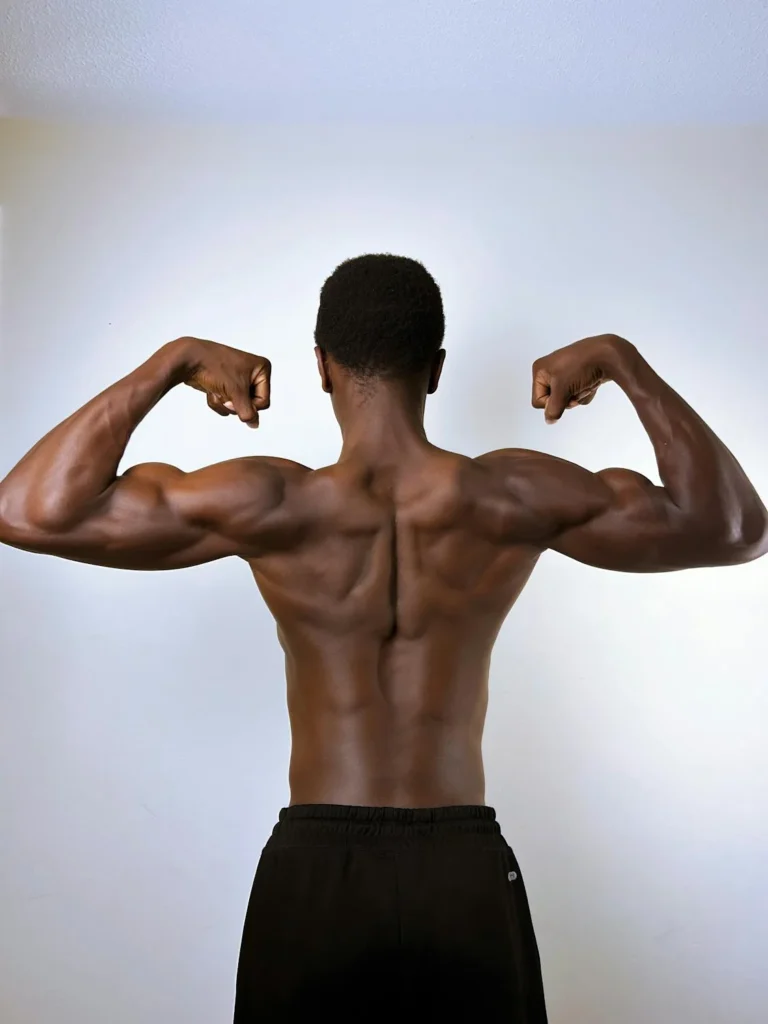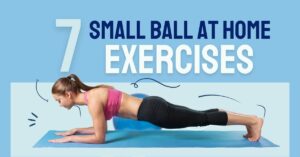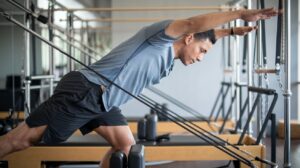Table of Contents
ToggleIntroduction:
Have you ever seen a professional athlete competing, and sprinters suddenly crossing the finish line, basketball players make a great flight in the air kind of moment and think, “Wow, how do they do that?” Although some athletes are born with talent, the reality is that most of their success comes from training hard, working smart, and being able to focus on the right things.
Training like an athlete is not just for professional sports stars. Whether you want to run faster, gain strength, or get fitter, you can train like an athlete, too. It’s about following a balanced fitness regimen — strength training, conditioning, flexibility and recovery.
In this guide, we’ll explain exactly how to begin training like an athlete. Whether you’re brand new to exercise or have been working out for a while, these tips can help you get in shape, build a solid routine, and take your fitness one step higher.
So, are you ready to learn what it’s like to train like an athlete? Let’s dive in!
2. Why Training Like an Athlete is Important:
What Does Athletes-Style Training Mean?
Training like an athlete is a regimen in which we base the principle of health fitness in a manner that emphasizes physical performance. That should include an increase in strength, endurance, speed, flexibility, and even mental toughness. Training like an athlete — and not just a weights-and-a-few-miles athlete—is about bringing the best out of your entire body.
Only professional athletes need to train intensely for their sport, but they do so with balance. Instead of focusing on just one area, like running or lifting, they work on everything within their fitness to advance their performance. The good news? You don’t even have to be a pro athlete to do what your body is trained to do! Train like them, and your fitness will feel robust and thorough — your body’s way of getting ready for just about anything.
Benefits for Everyone:
The most exciting thing about Training like an athlete is that it is not just reserved for people who want to compete in sports. With the right attitude and mentality, anyone can train like an athlete and awaken that primal inner beast to reach new fitness heights and live a healthier life. Here’s how:
Better Health: Exercise is the best way to protect heart health, reduce the risk of chronic diseases, and improve overall health.
More Energy: When you exercise regularly, your body learns to use energy more efficiently. This will help you feel more awake and alert during the day.
Improved Mental Health: Exercise is a great way to alleviate stress, enhance mood, and even improve sleep.
Boosted Confidence—When you get stronger and fitter, you will feel more confident in your body and your abilities.
Athlete in Training isn’t only about looking buff—it’s about feeling good and creating habits to increase your quality of life. So, if you want to be healthy, strong and feel more energetic, it’s time to begin.
Step 1: Get Ready to Train:
Prior to taking on any workout plan, it’s key to rally both your body and mind. Training like an athlete starts with learning how your body works, determining specific goals, and priming your mind.
Understanding Your Body:
The funny thing is that athletes know that understanding their bodies is the key to performing better. The human body is intricate, but when you break it down, there are a small number of components to concentrate on:
Muscles are the main engine of our body. They produce the necessary force to move your limbs, performing movements such as running, lifting, or jumping. The more muscles you have, the more powerful you will be.
Bones: Your bones provide structure for your body. Healthy bones let you lift, run, and jump pain-free. Weight-bearing exercises like squats and lunges can help maintain bone density.

Joints: Your joints are what let you move your bones. The more flexible and mobile your joints are, the freer you can move and the better range of motion your exercises can be performed in.
When training like an athlete, you want to strengthen all of these. Focusing on your muscles, bones, and joints during your workouts creates a stronger, more capable body that can adapt to many physical feats.
Setting Realistic Goals:
Training like an athlete takes work and planning, which is why goal setting is so critical. Clear goals give you a sense of direction, and you can evaluate yourself based on your goals. Here’s how to set goals:
Start with small, achievable goals:
- If you’re a beginning trainer, wait to plan on high-level goals immediately.
- Start with small wins.
- For instance, manage to walk 30 minutes a day, say, or do five pushups in a row without pausing.
Please Break Down Long-Term Goals: Want to run a 5K race? Begin by aiming to run for 10 minutes straight. Then, gradually build your time until you’re running a full 5K.
Your Goals Must Be Measurable: Apply numbers to your goals. Whether that’s the number of squats you can do in one go or how fast you can run a mile, having a quantifiable goal helps keep you accountable.
Do note: Training like an athlete doesn’t mean you have to be an expert the very next hour. Like pro athletes, you’ll improve with time and regularity.
Step 2: Design a Balanced Exercise Regimen:
An athlete’s workout regimen is well-balanced, centring on a variety of workout types to develop strength, endurance, and versatility. To train like an athlete, you need a balanced workout plan that includes:
Strength Training:
Strength training is all about building muscle. The more muscle you build, the stronger you will become and the better you will perform in activities such as running, swimming, or lifting.


As an athlete, here are some of the key exercises we use:
Pushups: Works on the arms, chest, shoulders, and core. Do sets of 8-12 pushups and increase the number as you get stronger.
Squats: Squats are great exercise for overall leg and butt strength. Begin with bodyweight squats, progressing to weights.
Planks: Your core is your foundation and the foundation of virtually all sports, and planks will strengthen that root. For a plank, begin with holding it for 30 seconds and extend the time from there.
Additionally, resistance training stimulates greater bone density, which contributes to longevity. As you build muscle, your posture, strength, and endurance will improve.
Cardio and Endurance:
Aerobic exercise increases your endurance—how long you can exercise before becoming fatigued. Athletes require considerable endurance to peak their performance, particularly in sports such as running, cycling, and swimming. For general fitness, you want to do at least 150 minutes of moderate-intensity cardio per week.
Cardio work that athletes do to improve their endurance.
Running is a fantastic method for building stamina. Begin by doing short jogs and progress slowly until you can maximize your distance and speed.
Cycling: Cycling is a fantastic low-impact cardio exercise that targets your legs while building endurance.
Swimming: Swimming engages your entire body and is great for endurance-building without putting added stress on your joints.
You don’t have to run a marathon to train like an athlete, but regular cardio workouts will help you become stronger, faster and more durable.
Flexibility and Mobility:
Flexibility is vital for avoiding injuries and enhancing performance. Athletes do stretching and mobility work not just in preparation but also to preserve their muscles and joints and maintain them at their physical limits.


Dynamic Stretching: This type of stretching needs movement. As you stretch, use, for example, leg swings or arm circles. It’s good to prepare your muscles before the exercise.
Static Stretching elongates muscles and promotes flexibility after workouts. All stretches should be held for at least 20–30 seconds each.
Yoga: Yoga is great for flexibility and concentration. Increases Mobility, Improves Posture, Relieves Stress
The more flexible you are, the freer you are to move and the lower your risk of injury.
Step 3: Fuel for performance like an athlete:
We know that just like an athlete trains hard to build strength, they also have to fuel their bodies with correct nutrition to perform at their best. Nutrition and hydration are two of the most important aspects of Training as an athlete.
Eating Right:
If you are doing everything you can to fuel your body like an athlete, those meals should consist of well-balanced nutrition. Here’s what you should eat:
Protein: Protein is necessary for the formation and repair of muscles. Choose protein-rich foods, such as chicken, turkey, fish, eggs, tofu, beans and lentils, for your meals.
Carbohydrates are the body’s main source of energy. Athletes need carbohydrates for endurance. Complex carbohydrates are found in plenty of foods like rice, pasta, oats, and fruits.


Healthy Fats: Healthy fats are great for your brain and fill you up. Add healthy sources of fat (nuts, seeds, avocado, olive oil).
Vitamins and Minerals: Remember to add some vegetables, fruits, legumes, nuts, seeds, and whole grains to provide your body with the vitamins and minerals it needs.
They also eat regularly, fueling their bodies before and after workouts with snacks that include, for example, a banana with peanut butter or a smoothie with protein powder. This poisons their energy and recovery.
Staying Hydrated:
Hydration is equally as important as eating healthy meals. Dehydration can impair your energy, concentration and recovery. Athletes consume a good amount of water throughout the day to remain hydrated, particularly before, during, and after exercises.
The general rule of thumb is to drink at least 8 cups of water daily. But if you’re working out really hard, you might need more. Be sure to stay hydrated during and after workouts, especially if you’re sweaty. If you are doing intense workouts, you can also use sports drinks to help replace your electrolytes.
Step 4: Rest and Recovery:
Recovering is just as important as the workout. Your muscles repair and strengthen during rest and recovery. If you do not recover sufficiently, you will become tired and, therefore, perform worse.
Why Rest is Important:
You cause microscopic tears in your muscles when you work out. There is time needed to heal these tears. With enough rest, your muscles get the chance to rebuild stronger. Exercising has its risks. If a person does not rest, they are more likely to injure themselves.
Be sure to sleep enough—7 to 9 hours a night is best. Sleep facilitates muscle recovery, replaces energy, and promotes general well-being.
How to Recover the Right Way:
Rest is great, but moving for an active recovery is also very good. Rather than lying there, attempt to do mild activity like mild walking, sluggish biking, or light stretching. Those activities help get blood flowing to your muscles, relieving soreness and helping you recover faster.
Conclusion:
Of course, Training like an athlete isn’t just about heavy lifting or endurance: It’s about creating a comprehensive exercise plan that engages every facet of you. From strength training to cardio, flexibility, and recovery, every aspect is critical to making you perform better and, more importantly, a better human.
Key Takeaways:
Tone your body by doing pushups, squats and planks.
Run, ride or swim to get your cardio in.
Nourish your body with nourishing foods, and drink plenty of water.
How to Train: Rest and recover to allow your body to build strength.
How to Get Started:
Begin with small, easily achievable goals.
As you get better, gradually make your workouts more intense.
Whatever, try to eat wholesome nutrients and drink water.
Allow yourself some time for rest and recovery — your body deserves it!
The key to Training like an athlete is consistency. Over time, with patience and purpose, you’ll notice improvements in strength, energy and health. Now it’s time for your fitness to go to the next level — let’s do this! You’ve got this!
(FAQs) for How to train like an athlete:
Do I need to be a professional athlete to train like one?
No! You don’t have to be a pro to train like one. Anyone can follow the principles of athletic training to improve strength, endurance, flexibility, and overall health. Whether you’re a beginner or have some fitness experience, training like an athlete can help you reach your fitness goals.
How often should I work out to train like an athlete?
For beginners, aim to work out at least 3-4 times a week. Your routine should include a mix of strength training, cardio, and flexibility exercises. As you progress, you can increase the frequency or intensity of your workouts, but make sure to allow time for rest and recovery.
What kind of diet should I follow to train like an athlete?
To fuel your body like an athlete, focus on a balanced diet that includes lean proteins, complex carbohydrates, healthy fats, and plenty of fruits and vegetables. Make sure to stay hydrated and eat enough to support your workouts, especially if you’re doing more intense exercises.
Is it necessary to rest between workouts?
Yes! Rest and recovery are just as important as the workouts themselves. Muscles need time to repair and grow stronger. Make sure to get enough sleep (7-9 hours a night) and take active recovery days with light exercises like walking or stretching to help your body recover.
How can I track my progress while training like an athlete?
You can track your progress by setting small, measurable goals. For example, track how many push-ups, squats, or planks you can do over time. Record your running distance or time, and aim to improve each week. Regularly checking your progress will keep you motivated and help you adjust your routine as needed.
What types of cardio exercises are best for training like an athlete?
The best cardio exercises for training like an athlete include running, cycling, swimming, and high-intensity interval training (HIIT). These activities build endurance, improve cardiovascular health, and help increase stamina.
Can I train like an athlete if I have limited equipment?
Absolutely! Many athlete-inspired exercises can be done with minimal equipment or even just bodyweight exercises. Push-ups, squats, lunges, planks, and running can all be done without any special gear. You can also use household items like water bottles or backpacks for added resistance.
How long will it take to see results from training like an athlete?
Results vary from person to person, but with consistent training, you can expect to see improvements in strength, endurance, and overall fitness within 4-6 weeks. However, long-term changes like muscle growth and increased endurance may take a few months of regular training.
Should I focus more on strength or cardio?
For a balanced athlete’s routine, it’s important to include both strength training and cardio. Strength training helps build muscle and improves overall power, while cardio boosts endurance and cardiovascular health. A well-rounded routine should include both types of exercises to maximize performance and fitness.
How do I prevent injuries while training like an athlete?
To prevent injuries, always warm up before workouts, stretch after, and focus on proper form. Start with lighter weights or lower intensity and gradually increase the difficulty as you get stronger. Don’t forget to listen to your body—if something hurts, take a break or modify the exercise. Also, make sure to get plenty of rest to avoid overtraining.vv











